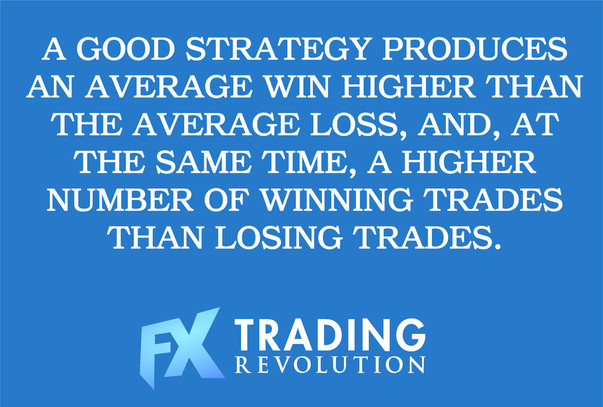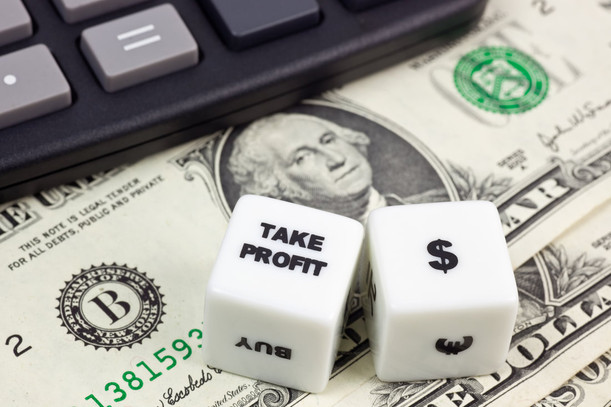Developing a profitable strategy to trade the markets is about good risk management habits and getting the probabilities on your side to the maximum. Different strategies produce different results on paper, but as we know, those can differ significantly with your actual results on your live trading account. A good measure of how well you or your strategies are performing can be obtained by looking at the details of your trading history or also known as the track record.
Specifically, there are two key aspects of your account statement that give a valuable insight into how well you are performing as a trader. Essentially, these two key aspects are the relationship between your average winning trade to your average losing trade and the win per trade ratio or also known as the winning percentage.
Strive to maximize the average winner to average loser ratio and the winning percentage
Basically, for a trading strategy to be profitable, at least one of the following conditions must be satisfied.
Either the average winning trade is bigger than the average losing trade, or the strategy produces more winners than losers on average (i.e. more than 50% of the trades are winners). Those two are always related, and obviously, the best result is if both of these conditions are satisfied. You know that you have a great and excellent Forex trading strategy when the average win is higher than the average loss and, at the same time, the number of winning trades is higher than the number of losing trades.
Obviously, the higher the winning percentage is, the better, but this is not something that’s easy to do. Of course, it’s the goal of every trader to have a high winning percentage, but it also must be viewed in context together with the average winning and the average losing trade because a high winning percentage may be of little benefit if the average losing trade is much higher than the average winner.
A high average winner to loser ratio is not an easy thing to achieve either, and it automatically means that your winning percentage will tend to be lower if you are aiming for it. So, the key to consistent profits in Forex trading is finding this nice balance between the two that will enable you to steadily and consistently grow your account.
Look beyond the simple numbers
The expected payoff or the average return per trade is your total net result (total profits or losses) from all of your trades divided by the number of trades you have taken. So, for example, if your total net result is 2000 USD after you’ve taken 100 trades then that simply means that the average output of your trading strategy is 20 USD per trade (2000/100=20). By the same token, If you have a net loss after 100 trades then your expected payoff would be negative.
As long as your expected payoff (average trade) is in the positive territory above zero, your account is growing and you are most probably doing okay in trading. However, to take a deeper look at things we need to look at the two other aspects that we mentioned earlier.
Another important aspect to watch is the biggest winning trade and the biggest losing trade because those two can reveal whether the trader takes excessive risks. A great winning percentage and winner/loser ratio may be put at risk if the trader has occasional big losses (e.g. 10% or more of his account). These huge losses can erase months of gains and must be kept under control. Frequent gigantic loses are usually an indication of serious errors within the trading strategy and the trading plan that must be addressed.
Know your goals but look at your historical results for a reality check
The average winning trade and the average losing trade are closely related to the risk/reward ratio, that is the stop loss and profit targets that you usually place on your trades. However, make no mistake, the two are not the same. Risk reward is what you are aiming for based on your expectations. Your track record, the average winning trade and the average losing trade are the actual reality based on your past results.
So, while you may be planning out everything nicely with a 1:5 risk/reward ratio on each trade, in the end, you may end up closing the trades earlier than allowing the target to be hit or you may widen the stops.
This will result in a different average winner to average loser ratio when compared to the risk/reward ratio that you were originally striving for.

Thus, you can see how this can affect your final output and yield very different results the strategy from what was expected initially. A strategy that looks great at first may end up as a losing strategy in such a situation, or in situations where order execution by the broker is bad. This is why it’s crucial to test strategies on a live account to get the true performance results.
Conclusion
Finally, a few points to keep in mind.
Remember to avoid being biased in trading in order to achieve a certain win/loss ratio or anything like that. In Forex trading, all decisions should be based on the market analysis and not on our desires and wishes.
So, the win/loss ratios we discussed here are something to look at occasionally to check how you are doing in trading the market, but it’s definitely not something to orient your trading decisions on. Holding any losing trade for too long in hope of it turning into a winner is a terrible strategy, regardless of the reasons for doing so. If your analysis says that the conditions for that trade are already turning negative it’s better to cut that loser sooner rather than later.
Also, factor in the spreads and commissions to the ratios and averages we discussed in this article because they can notably affect your bottom line, particularly if you are a scalper or a day trader. We have conducted tests on live accounts from different Forex brokers to experience and record how spreads and trading conditions compare and can differ greatly among them. Be sure to check the results out as some of them may completely shock you. You can find the research and the results at the following link:





